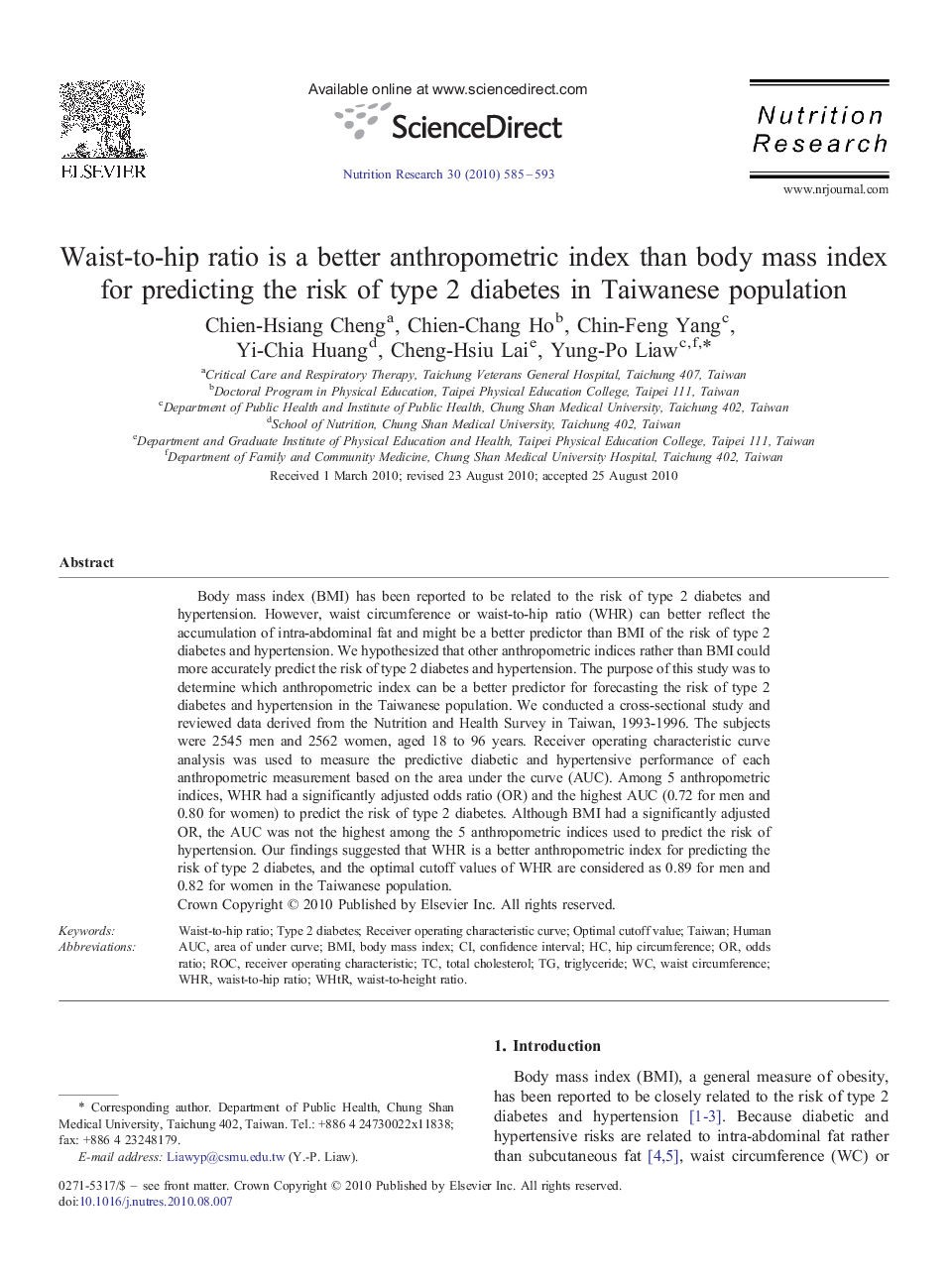| کد مقاله | کد نشریه | سال انتشار | مقاله انگلیسی | نسخه تمام متن |
|---|---|---|---|---|
| 2809452 | 1158047 | 2010 | 9 صفحه PDF | دانلود رایگان |

Body mass index (BMI) has been reported to be related to the risk of type 2 diabetes and hypertension. However, waist circumference or waist-to-hip ratio (WHR) can better reflect the accumulation of intra-abdominal fat and might be a better predictor than BMI of the risk of type 2 diabetes and hypertension. We hypothesized that other anthropometric indices rather than BMI could more accurately predict the risk of type 2 diabetes and hypertension. The purpose of this study was to determine which anthropometric index can be a better predictor for forecasting the risk of type 2 diabetes and hypertension in the Taiwanese population. We conducted a cross-sectional study and reviewed data derived from the Nutrition and Health Survey in Taiwan, 1993-1996. The subjects were 2545 men and 2562 women, aged 18 to 96 years. Receiver operating characteristic curve analysis was used to measure the predictive diabetic and hypertensive performance of each anthropometric measurement based on the area under the curve (AUC). Among 5 anthropometric indices, WHR had a significantly adjusted odds ratio (OR) and the highest AUC (0.72 for men and 0.80 for women) to predict the risk of type 2 diabetes. Although BMI had a significantly adjusted OR, the AUC was not the highest among the 5 anthropometric indices used to predict the risk of hypertension. Our findings suggested that WHR is a better anthropometric index for predicting the risk of type 2 diabetes, and the optimal cutoff values of WHR are considered as 0.89 for men and 0.82 for women in the Taiwanese population.
Journal: Nutrition Research - Volume 30, Issue 9, September 2010, Pages 585–593